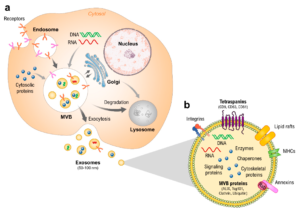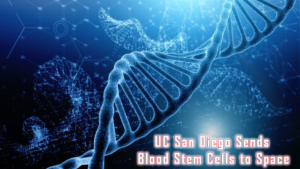Kalamazoo, MI – BioGravity LLC announced today the deployment of the BioGravity Platform to boost exosome production using their unique simulated microgravity process.
As BioGravity LLC co-founder Dr. James Secrest noted, “Recent advancements in the use of exosomes as drug delivery systems has peaked the interest and careful examination by worldwide pharmaceutical manufacturers.”
An exosome-based delivery system has particular benefits such as specificity, safety, and stability. By their homing characteristic, exosomes can deliver their cargo to specific targets over a long distance. Exosomes can also be used to deliver interfering RNA (siRNA) or pharmaceutically active substances, according to Journal of Nanobiotechnology.
As part of their BIOCOVERGENCE system development, BioGravity LLC will be deploying natural exosome production stimulants in this organic, but novel process. Revenues for exosome production can approach $800 per 5cc vial.
Exosomes formed in Sustained Simulated Microgravity Inhibit Apoptosis
A recent study took advantage of the random positioning machine (RPM) to simulate microgravity for the model and investigated the role of exosomes from RAW264.7 cell-derived osteoclasts in osteoclast-osteoblast communication. The results showed that this type of mature osteoclast-derived exosomes (OC-Exos) in the RPM evidently inhibited the cellular proliferation of osteoblasts via inducing cellular apoptosis and altering their cell cycle distribution.
Preventing the early death of cells may be the first step in modern regenerative medicine.

From National Library of Medicine
From Journal of Nanobiotechnology
Recent advancements in the use of exosomes as drug delivery systems
From Science Direct






More Stories